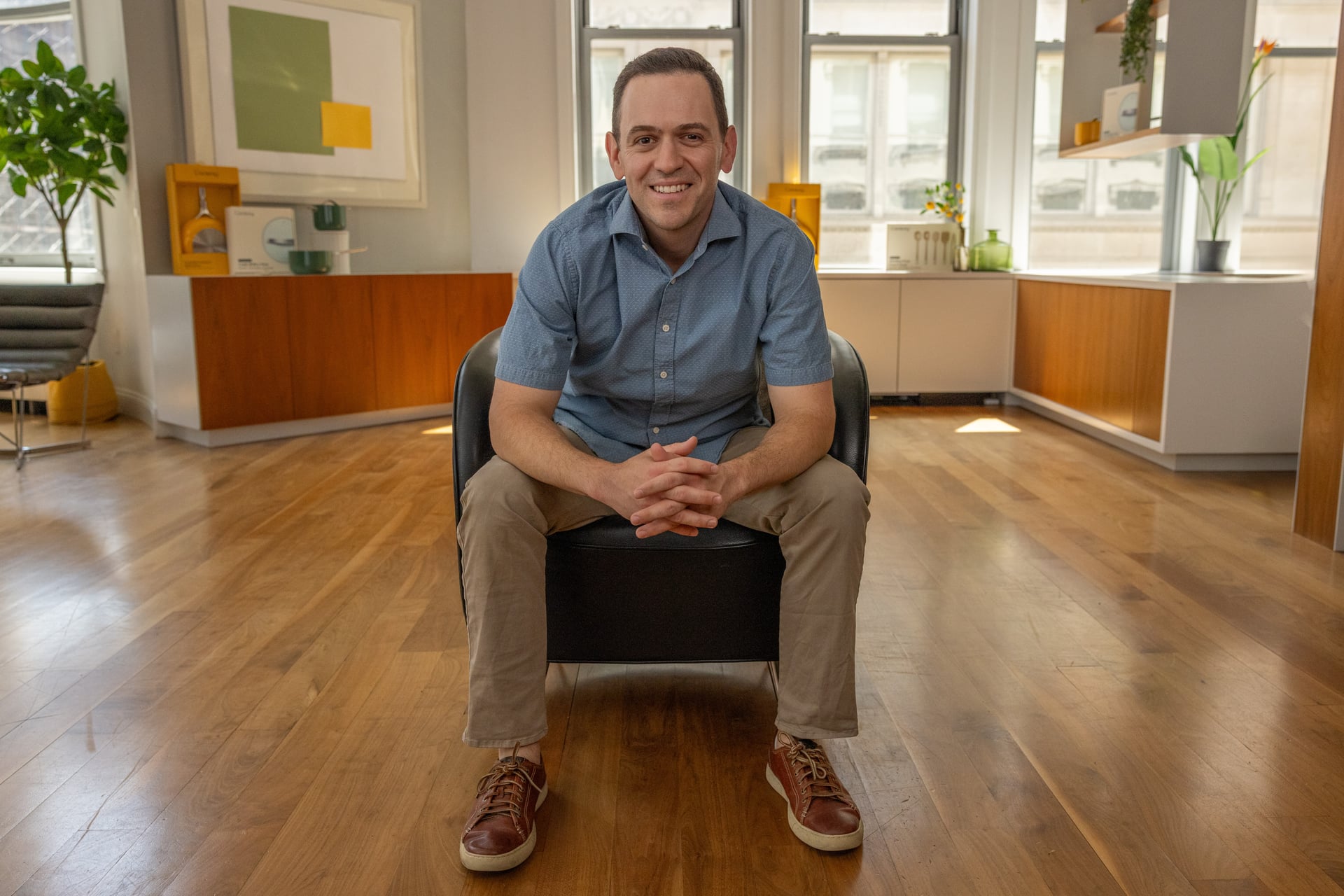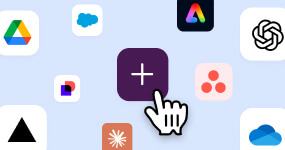When Caraway launched in 2019, the company started with just four people, one product, and a clear mission: create nontoxic, beautifully designed cookware that people actually want to leave on the stovetop. Today, it’s is a nine-figure brand with a fully remote team of 90, a five-year product roadmap, and customers around the world.
In a remote environment with no physical headquarters and no appetite for bloated systems or unnecessary layers, Slack is the backbone for how Caraway works. From product development to pricing pivots, onboarding to operations, the team built an efficient, fast-moving business with Slack as its foundational platform.
From four people to a global team, all in Slack
Caraway started using Slack before the company even launched its first product. Initially, it was a way to stay in sync across a small team. When Covid hit just months later, the company went fully remote and never looked back. They started answering questions, onboarding new hires, and hashing out brand strategy, all in Slack.
“In the early days, it was just a few of us, a couple laptops, and Slack,” says VP of Operations Mark Riskowitz. “As we scaled, the challenge was keeping that same agility with more people, more complexity, and global teams.”
Today, Slack is the AI-powered operating system for the entire company. Every team, every update, every decision runs through Slack channels. There’s one for every product launch, marketing initiative, supplier conversation, and campaign. Teams share daily sales dashboards, align on design feedback, and discuss product strategy, without playing a single game of calendar Tetris.
By tapping into Slack’s archive of work context, new hires can quickly add value without having to sift through long onboarding decks or awkward Zoom intros.

“As a new hire, I could read through past threads, meet people through the Donut integration, and feel immersed in the culture.
The team even vets new ideas through team surveys sent in Slack, sharing feedback on physical samples asynchronously. As timelines shift, they adjust the roadmap in-channel to keep everyone in the loop.
Using structure to keep speed at scale
As Caraway grew, the team had to become more intentional about how they used Slack. That meant:
- Naming conventions for project channels
- Pinned messages with timelines and resources
- Using threads to keep context attached to every conversation
- Leveraging reminders as personal and team nudges
- Breaking long discussions into focused project channels when needed
With these habits in place, communication could scale without anyone losing clarity. “My team was three people when I started,” says Nancy Gurd, Director of Customer Experience. “Now we have seven internal, 37 external. There’s no way we could have scaled that without Slack to keep everything centralized and searchable.”
This setup also helps the team stay calm and coordinated when things don’t go as planned. “If there’s a fire drill, we know to start a Slack channel,” says Chief Strategy Officer Jeff Avallon. “That’s where we coordinate and swarm. It’s automatic at this point.”
Automate the busywork, focus on the big stuff
Caraway launches dozens of products a year, often coordinating across marketing, ops, customer experience (CX), creative, and external partners. To do that without growing a massive organization, the team forgoes meetings and middle layers for structure and automation.
Slack workflows are a major part of the strategy. “If Slack disappeared tomorrow, we’d have to rebuild it or hire 20 people to replace it,” says Avallon.
Some of the most impactful Slack workflows at Caraway include:
- A product replacement request form that routes to the right team with a click
- A CEO request intake that syncs with Asana, their project management tool
- Automated onboarding tasks and training content delivery
- Emoji-triggered alerts for urgent CX issues
- Scheduled updates to kick off each week
“Every Monday, I have tons of scheduled messages that go out to different teams to start the week. It saves hours of back-and-forth,” says Riskowitz. Whether it’s routing vendor requests or launching a product, workflows keep the entire organization focused on execution.
That includes partners outside the org: With Slack Connect, Caraway loops agencies, contractors, and suppliers directly into the same channels as internal teams. Everyone shares updates, timelines, and feedback in real time.
“Slack Connect isn’t just for vendors,” Gurd says. “I use it to talk to CX leaders from other brands, too. I’ve got a little coalition of folks from Glossier, Brooklinen, and more.”

“Slack is where we run the business. We wouldn’t be able to function without it.”
“We use Slack workflows to manage vendor requests, feedback escalations, even internal training. This reduces noise and makes sure things don’t fall through the cracks,” says Harris.
What a day looks like in Slack (without the meetings)
Slack isn’t just something Caraway uses; it’s where their work lives. On any given day:
- Ashley Harris (Senior CX Manager): Checks emoji-triggered alerts in the #cx-escalations channel, responds to product replacement requests via a workflow, and sends a voice note with weekly tone guidance
- Mark Riskowitz (VP of Operations): Skims Monday recaps, schedules end-of-week check-ins, and sets reminders for vendor milestones
- Jordan Nathan (CEO): Drops a video message in the leadership channel, reviews workflow requests submitted by team leads, and weighs in on product roadmap threads between investor calls
Even the team’s personality shows up in Slack statuses. “Sometimes my team’s having a rough day and I’ll change my Slack status to something funny, like ‘99% off my patience today,’” says Gurd. “Everyone joins in, and it spreads to other departments. That’s Slack for us — it’s how we stay human.”
But staying connected doesn’t mean being in meetings all day. Instead, the team uses Slack huddles, voice notes, and scheduled messages to keep decisions moving without filling calendars. Threads keep context attached to ideas. Huddles solve urgent blockers without waiting for everyone to be free.

At Caraway, Slack huddles help teams resolve issues promptly, keeping company business moving.
When the team recently had to pivot a product’s pricing two weeks before launch, they kicked off a Slack huddle to align, then used custom workflows to assign updates across teams. Within days, they restructured a major launch without bottlenecks, confusion, or meetings. “We really try to leverage Slack instead of calls and calendar invites where we can,” says Nathan. “It keeps us moving.”
One workspace for every workflow
Caraway is equally disciplined when it comes to tools. Slack integrations bring in data from Shopify, Asana, Postscript, and other platforms so teams don’t need to switch tabs. Emoji reactions indicate task status. Polls guide product decisions. Recaps keep leadership aligned.
“We have an emoji system for product launches: green means good to go, yellow is in progress, red is blocked,” says Nathan. “It keeps everyone aligned without another meeting.”
With the rollout of AI in Slack, Caraway is working even smarter. Summaries let execs catch up on missed conversations. “Before vacation, I deleted Slack [temporarily] for the first time in four years. Thanks to recaps, I didn’t have to read every one of my messages when I came back. I just caught up in minutes,” says Gurd.
Search makes historical context instantly available. “I don’t have to dig through five years of Slack history to remember why we made a decision,” says Nathan. “AI-powered search just tells me.”

“Without Slack, we’d have to hire three more people just to manage internal systems, to procure different tools, and to try and find the most efficient way for employees to do their work.”
Building a business that feels small even as it grows
Even as Caraway scales, the company keeps its personal feel. New hires are welcomed in #introductions. Team culture lives in emoji, pets channels, and inside jokes. Nathan shares updates in his own #CEO-corner.
Culture takes just as much care as operations do. That’s why Caraway builds and maintains cultural rituals inside Slack: Donut for intros, search for context, workflows for onboarding. “Slack helps us stay human, stay connected, and stay fast,” said Nathan. “That’s how we’ll keep growing.”






